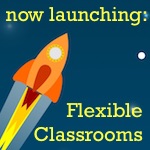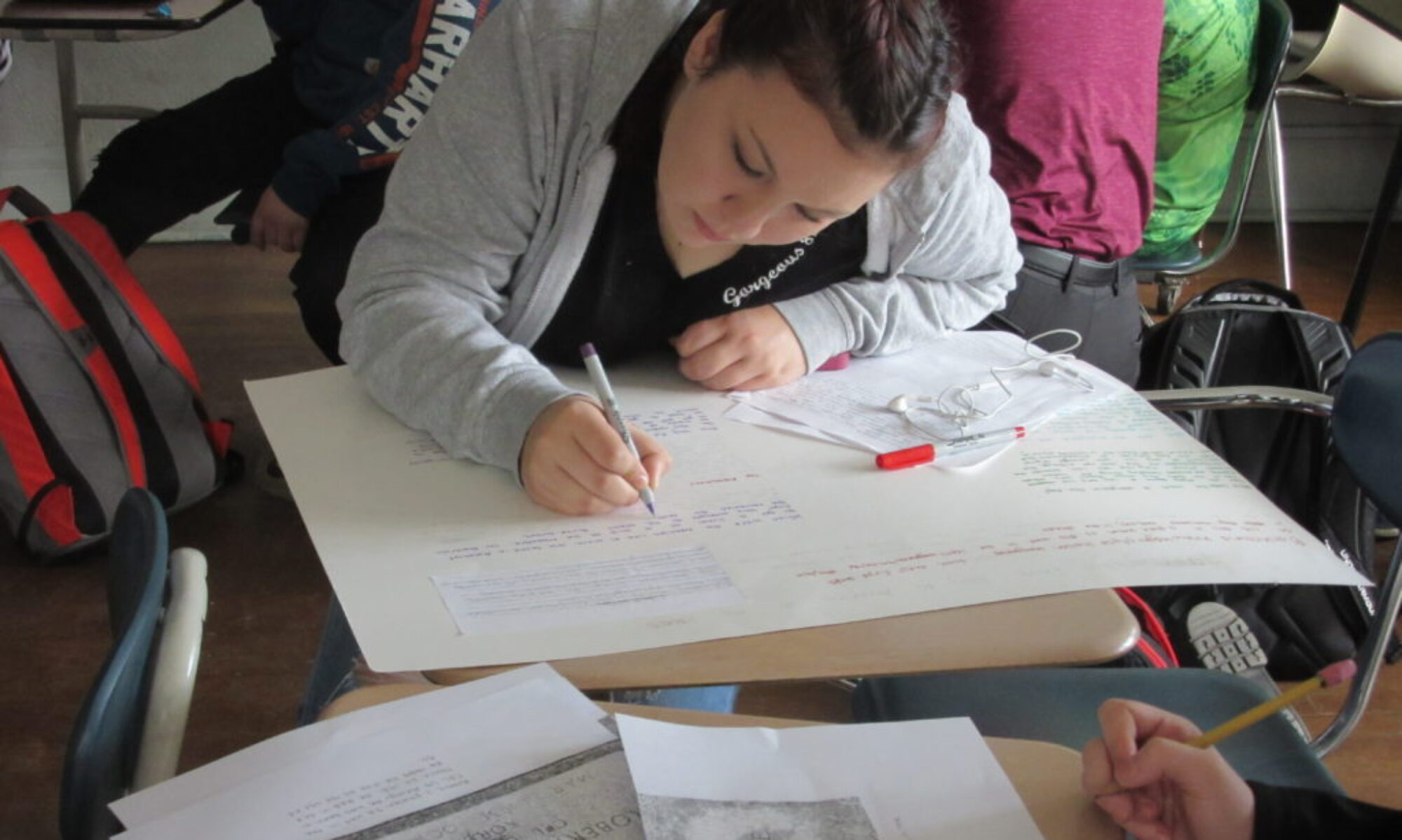Create open, flexible, engaging spaces for active student learning.
 The beginning of the school year! Desks, mailboxes, coat hooks labeled. Books organized, materials in bins. This task is often overlooked and underestimated in terms of time. How can you create a welcoming, flexible and inspired space? Here are some tips and ideas.
The beginning of the school year! Desks, mailboxes, coat hooks labeled. Books organized, materials in bins. This task is often overlooked and underestimated in terms of time. How can you create a welcoming, flexible and inspired space? Here are some tips and ideas.
Just get some help dragging those desks around, okay?
Why flexible learning spaces?
Well, the days of a sage on the stage are long over. We know that students learn best through active, social learning opportunities — especially middle grade students. And if the goal is to create a community that builds student leadership, independence, problem-solving and creativity, how the classroom is set up plays a crucial role.
Envision a space where students move to spaces that work for them.
Some prefer the floor, others groups of desks. Other students prefer to be tucked into a corner or at a more private space where they can feel secure or spread out.

Students gather at one space, then move to another for individual work. Their work is featured in the room, and the room is creative, comfortable and inspiring.
Set up the room with some creative spaces in place
Consider this your “rough draft” before you get student input. You can get some fabulous inspiration here.
Ask for student feedback and ideas in morning or class meetings
Create maps, lists, and ideas. Get it all down and see what you can make happen. Ask kids for help. They can bring in pillows, portable chairs, whatever they dream up and you think will fit in the space. This will immediately create ownership and investment.
Create spaces for research and independent work
Where will students choice read? Research? Work independently? Carve out some creative spaces for this. Bean bags and camping chairs are helpful to have in this stage. Teachers can assign students randomly each day to bean bags or portable chairs if you have more students who want to use them than you have available. I used popsicle sticks for this purpose each day.
Create spaces for collaborative work
Where will students meet in small groups? A large table? A floor space? Design a few group spaces that will work for this purpose.
Create spaces to exhibit work
Where will you feature student work? Ongoing, and finished? Often every surface in my room was covered with projects that were in progress. Find the spaces you know will have work ongoing, and those spaces where you can feature finished work.
I know, you don’t have much space. Think creatively: use the walls, the ceiling, and the halls. Sometimes we would take over our collaborative space with project displays. These spaces can be interchangeable, depending on what is happening in your classroom.
Create unique, comfortable, spaces for different learning styles
Or, be open to developing these as needed. Often needs emerge during class. One student needs a space with minimal distraction, while another works best by the window or in groups. Use furniture, cloth, bean bags, and to create spaces that support students as needs arise. The special educator can often be a co-creator for these types of spaces. And always ask the student! What would work for you?
Design a space for students to be physical
I know, there is not much room for this. But have an idea, where can students go who need a physical break or to move around? Is there a space in the classroom for a quick break, such as a yoga mat, a place to do Go Noodle (love this movement break website!), or an errand a student can run for a break? Think about these spaces before the school year so when it comes up you are ready.
Laura Botte, a middle grades math educator at Edmunds Middle School works hard with teaching partner Katie Wyndorf at maximizing the ways their students can integrate physical movement into their learning. Check out some of Botte’s design experiments, below.
[huge_it_slider id=”10″]
Frequently check in with students
How is this space working and not working for our needs? What are your suggestions? The best ideas always seem to come from students. Be open to their feedback and try ideas you think will probably not work, because they just might surprise you! And in doing so, they will know you are serious about student leadership and voice in the classroom.


Comments are closed.